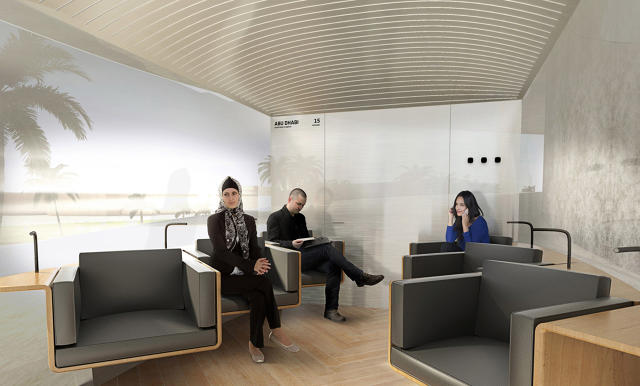
The autonomous network would see passengers traveling in pods propelled at speeds of up to 1,100km/h.
The Hyperloop would link Dubai and the UAE’s capital Abu Dhabi with a journey time of 12 minutes.
Landmarks such as the Burj Khalifa, the Etihad Towers, Al Maktoum International Airport and the Saadiyat Cultural District would be connected by the system.
BIG’s design for LA firm Hyperloop One is based on a study of “how an urban and inter-city transport network should integrate with existing infrastructure”.

It said: “All elements of the travel experience are designed to increase convenience and reduce interruptions. The main objective of the design is to eliminate waiting from the passenger experience. Hence, the stations are called portals.”
All departure gates will be immediately visible upon entering the portal. Passengers will travel in a six-person pod contained within a transporter with a pressure vessel attached to a chassis for levitation and propulsion.
BIG says: “The relatively small unit-size of the pods paired with a high arrival and departure rate allows for on-demand travel. Different interior environments and seating arrangements offer passengers a travel experience tailored to their needs, whether traveling solo or in groups, for business meetings or casual trips.”
Pods can operate autonomously from the transporter, which means they are not limited to the portal area and can move on regular roads and pick up passengers at any point. Pods can be loaded onto the transporter and ‘hyperjump’ to another portal merge onto the street and drop passengers off at their final destination.

Bjarke Ingels said: “With Hyperloop One we have given form to a mobility ecosystem of pods and portals, where the waiting hall has vanished along with waiting itself.
“We are heading for a future where our mental map of the city is completely reconfigured, as our habitual understanding of distance and proximity – time and space – is warped by this virgin form of travel.”
[Source:-GCR]





